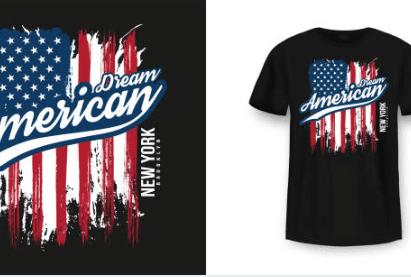
1. Understanding The Basics of Textile Fiber Technology
Textile fiber technology is the crux of clothing durability. It has increasingly become a focal point for consumers searching for long-lasting wear. Indeed, the draw of enduring fashion items like durable jeans highlights the convergence of functionality with style. As the industry approaches this demand, it leverages a variety of fibers, rendering an extensive array of textiles that grace our wardrobes. These technological advancements have transformed not just the physical properties of the textiles but also consumer expectations and market offerings. From the selection of fabric to the intricate detail of fiber weaving and blending, every process is significant to ensure textiles meet functional requirements and aesthetic value. Such sophisticated processes often involve rigorous testing and certifications, enabling consumers to trust in the durability and quality of their clothing.
2. Consumer Demand for Durable Clothing
Shifting preferences towards enduring fashion are visible in market trends, wherein consumers consider durability a key factor in purchasing decisions. This emerging trend for strength and longevity has economically viable promises, suggesting a more sustainable fashion future. It is a poignant response to the otherwise transient nature of trends and fast fashion that dominates current retail environments. As durability becomes a selling point, manufacturers adjust their practices, opting for high-quality materials that resonate with the burgeoning eco-friendly ethos.
The value of a garment now extends beyond the check-out line as consumers weigh the longevity and subsequent impact on the planet. Eco-conscious shoppers scrutinize the lifecycle of their attire. At the same time, brands cater to this sensitivity through transparent production methods and robust material choices. The aspiration for durable clothing bridges the gap between environmental stewardship and savvy shopping, ushering in a new paradigm for the fashion industry to consider.
3. The Role of Fiber Technology in Sustainable Fashion
The intersection of fiber technology and sustainability has become an epicenter for change within the textile industry as the repercussions of ‘fast fashion’ mount; the pivot towards durable fibers is practical and ethical. These innovations address challenges such as waste, pollution, and resource depletion, steering the industry toward a more responsible approach to fashion. Furthermore, developing tough and recyclable textiles propels the industry toward a circular economy, defying the once linear ‘make, use, dispose’ model.
Sustainable fibers curb the frequency of garment replacement and echo a deeper sentiment of global environmental care. With every thread of robust material comes a thread of hope—a vision of a fashion ecosystem that values endurance as much as design and symbolism as much as service.
4. Exploring the Science Behind Tough Fibers
The science of crafting tough fibers is both complex and intriguing, tapping into advanced chemistry and engineering domains. Contemporary textile scientists and technologists meticulously manipulate the molecular structure of fibers to enhance their intrinsic strength. Such micro-level control enables the synchrony of durability with other textile features, such as elasticity and breathability. These advances demonstrate a radical shift from treating textiles as mere fabrics to recognizing them as sophisticated materials deserving precision and innovation.
The development of tough fibers is also symptomatic of consumers’ diversifying needs. No longer is resilience simply an attribute of industrial-grade materials—it has seeped into everyday fashion. As a testament to this, new fabric treatments are being developed that serve dual purposes: maintaining the integrity of fibers while imbuing them with properties that cater to consumers’ active and varied lifestyles.
Comparing Traditional and Modern Textile Fibers
The dichotomy between classic and contemporary textile fibers reveals a wide spectrum of choices for connoisseurs and casual buyers. Traditional fibers bestow unmatched tactile pleasure and artisanal warmth, while modern ones reciprocate with impressive longevity and robustness. Yet, this distinction is becoming more nuanced as the latest innovations amalgamate the appeal of natural textiles with the resilience of engineered fabrics. Consumers find themselves at a crossroads of decision, often caught amidst the allure of the archetypal and the pragmatism of the innovative.
The marketplace reflects a polarity of preferences—some consumers vociferously advocate for the timeless allure of materials such as wool and silk. In contrast, others champion the indefatigability of synthetic compositions.
5. The Impact of Durable Fibers on Lifestyle and Activities
The practical implications of durable fibers touch every facet of daily life, offering benefits spanning professional needs to recreational pursuits. For labor-intensive professions, rugged textiles can mean the difference between frequent uniform replacements and a singular investment in quality. Similarly, outdoor enthusiasts revel in gear that assures the elements while maintaining ease of movement and comfort.
Testimonials from satisfied consumers underscore these materials’ functional merits and highlight their broader societal benefits. There’s a growing recognition that choosing long-lasting clothing also means embracing sustainable lifestyle practices. An individual’s wardrobe thus becomes a statement of their values and a gauge of the industry’s health.
6. Making an Informed Choice: What to Look for in Durable Textiles
Enlightened consumers intent on purchasing durable garments would benefit from an awareness of certain textile characteristics. Fluency in deciphering garment tags and certification symbols can illustrate quality and durability. Paying attention to the composition of fabrics, the brand’s reputation, and even the stitching details can reveal much about an article of clothing’s potential lifespan. Coupled with proper garment care, these considerations extend the utility and visual appeal of durable clothing, promoting a culture of thoughtful consumption and respect for materials that have been engineered to last.
Conclusion:
7. Embracing Technology for a Durable Wardrobe
The amalgamation of technology and textiles has indelibly changed the fashion landscape. It has fostered an apparel paradigm that is as considerate of the Earth’s fragility as it is devoted to human desires and creativity. Consumers today are empowered with choice and knowledge, where every purchase can be conscientious, backed by the assurance of sustainable practices and high durability. Embracing this technological tide positions us at the forefront of a wardrobe revolution, where longevity, function, and style are woven into the very fabric of our attire.



